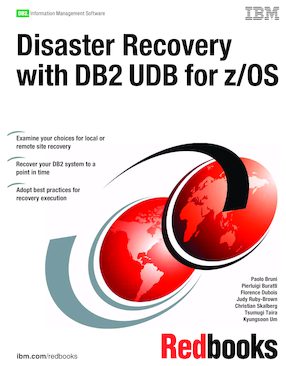Abstract
DB2 for z/OS is the database of choice for critical data for many enterprises. It is becoming more and more important to protect this data in case of disaster and to be able to restart with a consistent copy of the DB2 data as quick as possible and with minimal losses.
A broad range of functions can be used for the disaster recovery of DB2 subsystems. The traditional DB2 based solution consists of safe keeping and restoring image copies and logs. More general functions, applicable not only to DB2 data, but to the whole system, are hardware related, such as tape vaulting or disk volumes mirroring. Other functions are specific to DB2 such as the Tracker Site. There are also products providing replication capabilities which can be used for specific propagation requirements.
DB2 UDB for z/OS Version 8 has introduced two new subsystem wide utilities, BACKUP and RESTORE, which, by interfacing the copy pools functions of DFSMS 1.5, are able to provide Point-In-Time recovery capabilities.
The disaster recovery solution consists of the combination of coherent options that best fit in with the requirements, the current environment, and the investment.
In this IBM Redbooks publication we first introduce the main concepts, and the primary components for possible solutions. We then describe the most common solutions, and implement several recovery scenarios. All our tests were implemented with DB2 UDB for z/OS Version 8. We also include criteria for choosing a solution, and recommendations based on recovery best practices.
We focus on requirements and functions available for a disaster recovery strategy for data stored and managed by DB2 for z/OS. It is worth remembering that the non-DB2 data, logically or physically related to the DB2 applications, should be treated with equivalent and congruent solutions.
Table of Contents
Part 1. The whole picture
Chapter 1. Business continuity
Chapter 2. DB2 disaster recovery
Part 2. Disaster recovery major components
Chapter 3. Traditional recovery
Chapter 4. DB2 Tracker
Chapter 5. ESS FlashCopy
Chapter 6. SMS copy pools and DB2 point in time recovery
Chapter 7. Peer-to-Peer Remote Copy
Chapter 8. eXtended Remote Copy
Part 3. General solutions for disaster recovery
Chapter 9. Split Mirror
Chapter 10. FlashCopy Consistency Group
Chapter 11. Global Copy PPRC-XD
Chapter 12. Global Mirror PPRC
Chapter 13. XRC: Global Mirror for z/OS
Chapter 14. Geographically Dispersed Parallel Sysplex
Part 4. Implementing disaster recovery scenarios
Chapter 15. Set Log Suspend - FlashCopy - More Log - Restore System Log Only
Chapter 16. FlashCopy Consistency Group and restart
Chapter 17. PPRC - FlashCopy from secondary
Chapter 18. XRC and restart
Chapter 19. Local recovery: System PITR
Chapter 20. Restart using tape dump of copy pools
Part 5. Additional considerations
Chapter 21. Data sharing
Chapter 22. Validation and performance
Appendix A. REXX procedures
Appendix B. PITR definitions
Appendix C. Additional material
Others who read this also read
